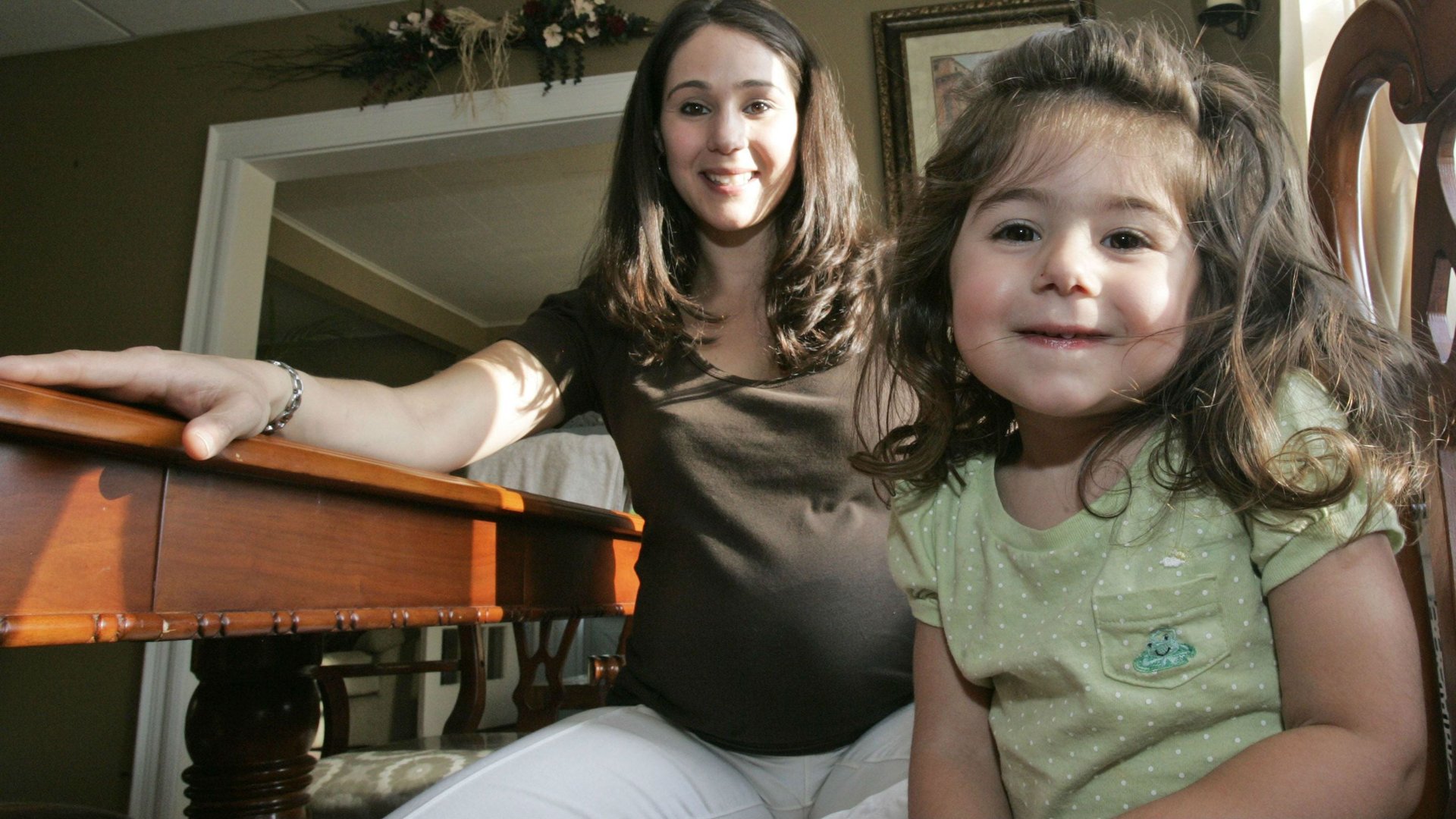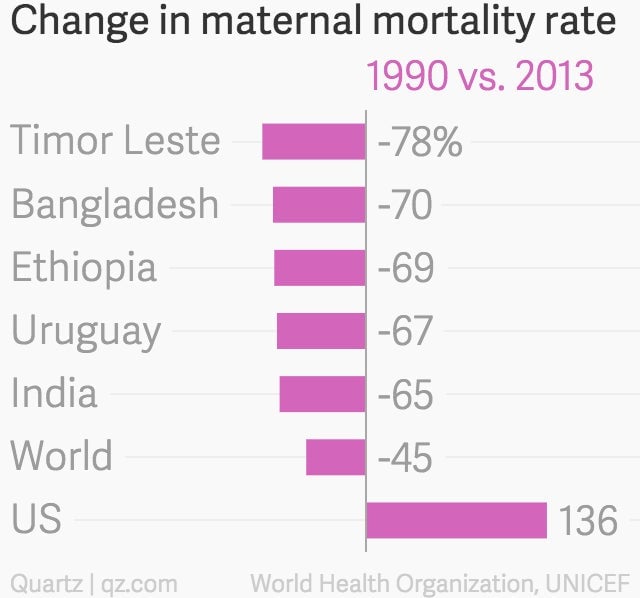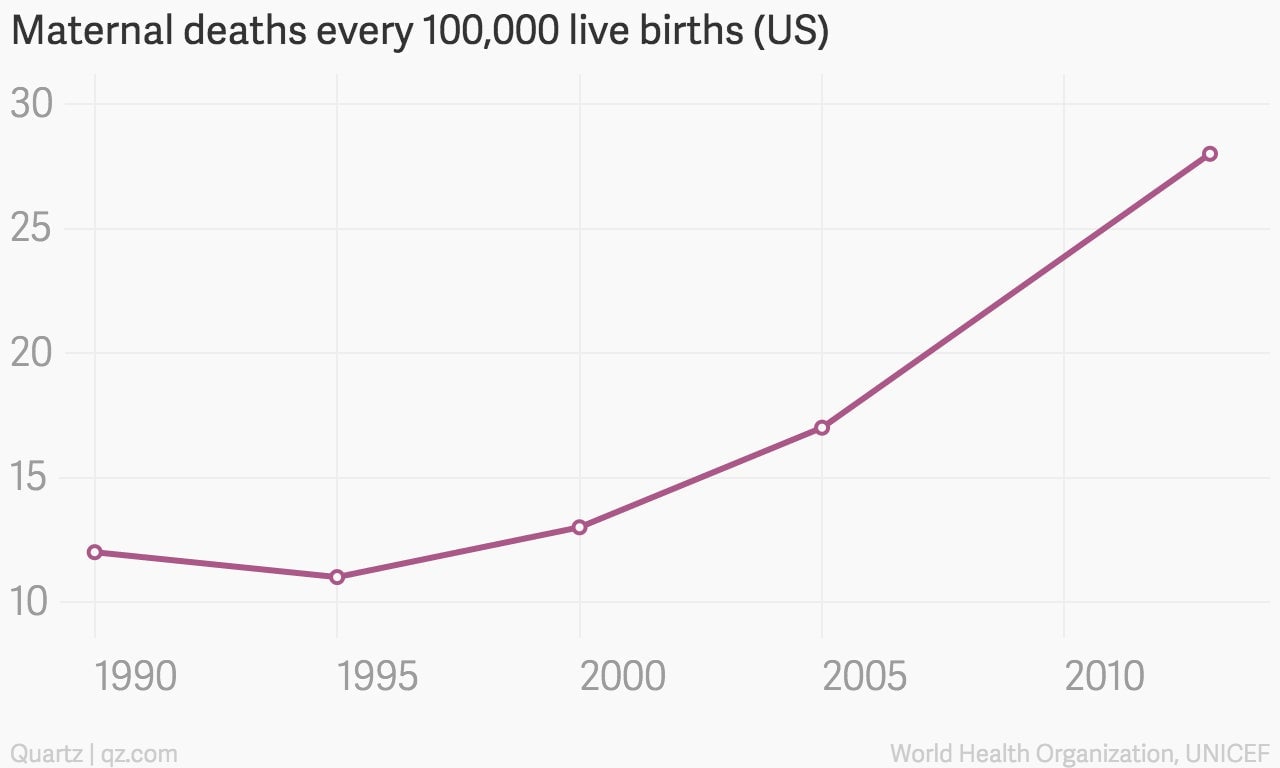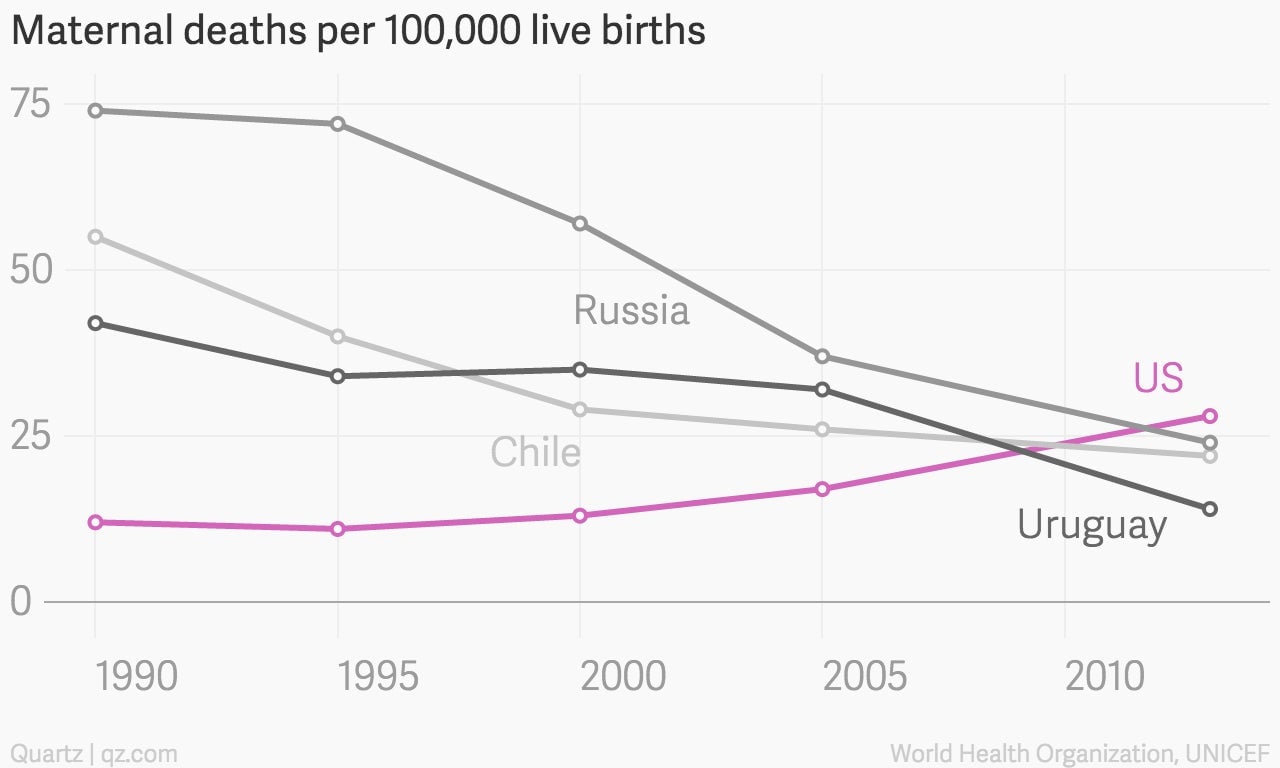American mothers die in childbirth at twice the rate they did in 2000
Here’s something for the 80-some countries celebrating Mother’s Day today to cheer: compared to a few decades ago, many more mothers are around to be celebrated. In the last quarter century, the rate at which women die of pregnancy-related causes has dropped 45%, according to a World Health Organization (WHO) report (pdf), to just 210 maternal deaths per 100,000 live births in 2013.


Here’s something for the 80-some countries celebrating Mother’s Day today to cheer: compared to a few decades ago, many more mothers are around to be celebrated. In the last quarter century, the rate at which women die of pregnancy-related causes has dropped 45%, according to a World Health Organization (WHO) report (pdf), to just 210 maternal deaths per 100,000 live births in 2013.
While rates are still high in many part of the world, overall, their near-universal downward trajectory is encouraging.

One country, however, bucks this trend. Each year, around 1,200 American mothers die in childbirth—meaning about 28 mothers die for every 100,000 live births.
That’s an alarming increase from mere decades ago. In fact, between 1990 and 2013, the US’s maternal mortality rate surged 136%.

Even with that increase, the US’s current rate maternal mortality rate is still much smaller than that of many poorer countries—but by no means not all of them. Mothers in Uruguay, Lebanon, Libya, Kazakhstan, Chile, Albania, Azerbaijan, Russia, and Thailand die at lower rates. The average for developed countries, excluding the US, is just shy of 11 maternal deaths per 100,000 live births.

It’s not just the deaths. On top of the 1,200 American women who die every year of pregnancy-related causes, there are 60,000 “near misses,” or women who were really close to dying but survived. The combination of deaths and near-misses makes American women over 10 times more likely than their peers in, say, Austria or Poland to die of pregnancy-related causes—this despite the fact that the US’s per capita spending on maternal care is higher than any other country.
What’s behind this alarming spike in US maternal mortality?
Priya Agrawal, obstetrician and director of Merck for Mothers, identifies three leading causes of maternal death in the US: postpartum hemorrhage (heavy bleeding after giving birth), preeclampsia (high blood pressure during pregnancy), and complications arising from pre-existing health conditions. Women getting pregnant are increasingly less healthy, she says. “This year, one in five women [in the US] who become pregnant are obese,” said Agrawal at the Women in the World conference. “Then there’s diabetes and hypertension.”
While it’s hard to understand what exactly changed since 1990 to cause such a surge of maternal deaths, Agrawal says significant blame can be put on a general worsening of the health of American women.
Good health care isn’t always available to mothers before and after giving birth, says Monica Raye Simpson of Sister’s Song, a non-profit group promoting reproductive rights for women of color.“The first barrier is access,” Raye Simpson told Forbes. “The second barrier is racial discrimination.” The black community is particularly affected by maternal mortality, with black American women being over four times more likely to die of pregnancy-related causes than white peers.
Perhaps the biggest barrier to improving the maternal mortality is the silence that surrounds it, said Agrawal. US hospitals aren’t required to keep detailed records deaths during childbirth, and there are no reliable data on their causes (the data available in the WHO report is an estimate triangulated from a slew of sources). Partners of women who die in childbirth are generally too preoccupied with caring for a newborn on their own to become advocates on the issue.